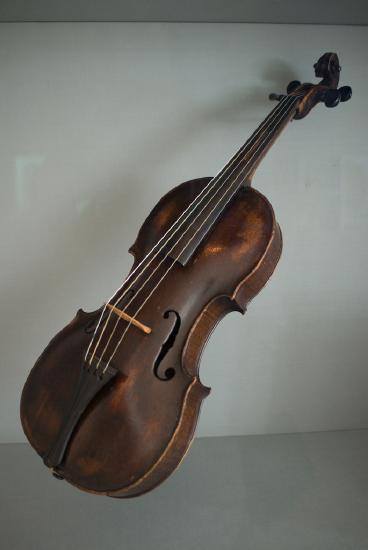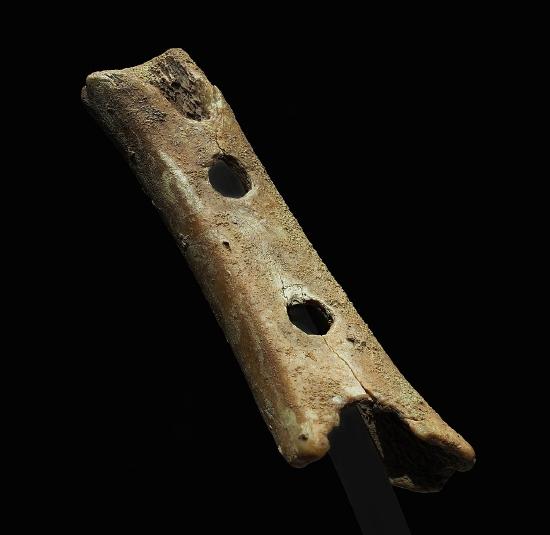2.2: Instruments
- Page ID
- 165583
Musical Instruments.
This page briefly addresses the different types of instruments that one would find in a symphony orchestra. Traditionally speaking, the orchestra is broken into different families: the string, woodwind, brass, and percussion families. Admittedly, this classification creates some problems: why is the flute a member of the woodwind family, when they're made of gold, platinum, or silver? And if the French horn is a brass instrument, why is it combined with the woodwind quintet?
These questions clearly necessitate a new type of classification. Over the last several decades, scholars have opted to use different ways of categorizing instruments, using words like membranophone or aerophone—referring not to what the instrument is made of, but how the sound is produced. This allows for non-Western and modern instruments (like electronic instruments) to be classified more logically.
That being said, when discussing the orchestra, this text opts to use the traditional categories, which are still widely used. The following is a brief description of the instrument families. Readers should consult the VIDEO LINK to see a more in-depth discussion of these different instrument families.
The String Family.
"Violin, Figaro House, Vienna" by cphoffman42 is licensed under CC BY-SA 2.0.
The string family consists of several different instruments: the violin, viola, cello, and bass are the most common in the traditional repertoire that we come across. Interestingly, all four of these instruments are essentially the same: the only significant difference between the four of them is the size. Because they all create sound the same way, they all blend together quite well, creating a homogenous sound. In the VIDEO LINK, you'll be able to see how these instruments create sound.
Modern orchestras are defined by their string players. Without string players, there is no orchestra! The early orchestras of the Baroque period consisted of perhaps 12-20 string players, and maybe some woodwinds and a few brass players. They might have included a timpani player. But they needed strings, because strings define the orchestra.
The Woodwind Family.
The oldest known flute fragment (60,000 years old!) known as the "Neanderthal flute." Picture by Petar Milošević - Own work, CC BY-SA 4.0.
In the orchestra, the woodwind family includes a variety of instruments that produce sound, all of which create sound differently: the flute, clarinet, oboe, and bassoon. Of course, there are many others, which readers can learn about in the VIDEO LINK. The above picture is a fragment of the oldest known flute in recorded history. Discovered in 1995, it is made from the femur of a young cave bear. According to the National Museum of Slovenia, it is over 20,000 years older than other flutes that were made by "anatomically modern humans." Readers who are interested may view a short 10 minute clip about humanity's oldest instrument in existence.
In the orchestra, woodwinds are treated as soloists. For example, unlike the violins (of which there are many within an orchestra), there may be only 1 or 2 flute players. Each of them plays their own thing, meaning they are soloists within the entire orchestra.
Additionally, woodwind players create their sound differently: flute players blow air over a hole (similar to blowing air over a soda bottle); clarinet players blow air through a mouthpiece that has a wooden reed attached to it—the vibration of the reed creates the unique sound of the clarinet. The oboe and bassoon use two different reeds, making it a "double reed" instrument.
A common ensemble comprised of woodwind instrumentalists is called the woodwind quintet, which uses a flute, oboe, clarinet, bassoon, and French horn. Because they all create sound differently, it is easier to discern which instrument is playing when listening to a woodwind quintet (unlike the string quartet, where all instruments create sound in a similar way). The next page will discuss this small ensemble.
The Brass Family.

US Army Band by SSG. Chris Branagan. Public Domain.
The most common brass instruments in the orchestra are the trumpet, trombone, French horn, and tuba. Each of these instruments create sound the same way: players place their lips in a mouthpiece, and blow air through the horn as they "buzz," or vibrate their their lips. Similar to the woodwind family, these instruments are typically acting as soloists within an orchestra, with each player playing their own part without anyone else playing the same thing. When brass players get together and play (as seen in the above picture), we have a brass quintet. Readers should watch the VIDEO LINK to see more about how these instruments create sound. The next page discusses the brass quintet in more detail.
The Percussion Family.
Image from Oregon Symphony Learning Center. Fair use under US law.
The percussion family consists of a wide variety of different types of instruments: all of them include hitting something with a stick or mallet (which is a stick with cushioning). Percussion instruments can be either pitched or un-pitched. Pitched instruments like the marimba, xylophone, vibraphone, timpani, or piano (you read that right!) have the ability to create melody because they produce pitches (like a piano). Un-pitched instruments like a snare drum, bass drum, cymbal, or triangle are unable to play a melody due to the fact that they don't actually produce a pitch in the traditional way.
Traditionally, percussion instruments were very scare in the orchestra. The timpani (or "kettle drum") is the most traditional percussion instrument in the orchestra, and was usually the only percussion instrument in Baroque and Classical orchestras. As time went on, and the orchestra got larger, more and more percussion instruments were added to the orchestra. View the VIDEO LINK to learn about the specific instruments that are more traditional in the orchestra. For readers who are more interested in percussion instruments, they may view the website of the Oregon Symphony Orchestra Percussion page.




